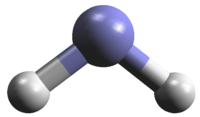|
The Hamiltonian is described in
(1) H. S. P. Müller, H. Klein, S. P. Belov, G. Winnewisser,
I. Morino, K. M. T. Yamada, and S. Saito
1999, J. Mol. Spectrosc. 195, 177.
The lines used in the fit include submillimeter, and terahertz data
from (1) and millimeter and submillimeter lines from
(2) M. Tonooka, S. Yamamoto, K. Kobayashi, and S. Saito,
1997, J. Chem. Phys. 106, 2563.
Microwave optical double resonance (MODR) data, mostly
magnetic dipole transitions, from
(3) J. M. Cook, G. W. Hills, and R. F. Curl, Jr.,
1977, J. Chem. Phys. 67, 1450;
(4) G. W. Hills, R. S. Lowe, J. M. Cook, and R. F. Curl, Jr.,
1978, J. Chem. Phys. 68, 4073;
and from
(5) G. W. Hills and J. M. Cook,
1982, J. Mol. Spectrosc. 94, 456
were also used.
However, except for the strongest components of one electric dipole
transition these lines have not been merged.
Furthermore, far infrared transitions from
(6) I. Morino and K. Kawaguchi,
1997, J. Mol. Spectrosc 182, 428
and
far-infrared laser side-band measurements from
(7) H. Ozeki and S. Saito,
1998, J. Mol. Spectrosc. 192, 183
were also used in the fit, but not merged because of their large uncertainties.
The new entry employs additionally transitions near 2 THz
measured with microwave accuracy. These were taken from
(8) R. Gendriesch, F. Lewen, G. Winnewisser, and H. S. P. Müller,
2001, J. Mol. Struct. 599, 293.
Also used in the fit were ground state combination differences
published in (8) which are from an investgation of the NH2
electronic spectrum by
(9) R. N. Dixon, S. J. Irving, J. R. Nightingale, and M. Vervloet,
1991, J. Chem. Soc. Faraday Trans. 87, 2121.
The dipole moment was determined by
(10) J. M. Brown, S. W. Chalkley, and F. D. Wayne
1979, Mol. Phys. 38, 1521.
At low temperatures, it may be necessary to discern between
ortho-NH2 and para-NH2.
The ortho states are described by Ka + Kc even,
the para states by Ka + Kc odd.
There are three times as many levels for ortho-NH2
than there are for para-NH2.
Thus, for transitions with unresolved 1H hyperfine splitting
the nuclear spin-weight ratio is 3 : 1 between
ortho-NH2 and para-NH2.
However, for transitions with resolved 1H hyperfine splitting
no non-trivial spin-statistics have to be considered.
The NKaKc = 101;
n, F + 1/2 = 12, 1 (or J, F1 = 1.5, 0.5)
is the lowest para state. It is 21.1102 cm–1
above ground.
Nov. 2010: corrected separate
para and
ortho predictions are available along with separate
para and
ortho partition function values.
NOTE: The quantum number
format is different from that of the main entry; redundant
quantum numbers (e.g. I) have been omitted !
Predictions of the NH2 pure rotational spectrum
without hyperfine splitting are also available
in units of MHz along with
partition function values or
in units of cm–1.
|
